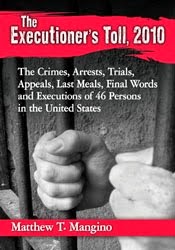Florida Governor Ron DeSantis, within months of being sworn in, signed SB 7066, a law requiring
former felons to pay outstanding, court-ordered fees, fines, or victim
restitution to the state before they can vote. In doing so, analysts say,
DeSantis, a Republican, instantly
disqualified some 1.4 million voters, reported the
New Republic.
SB 7066 made national headlines and
prompted a lawsuit from the American Civil Liberties
Union; last week, a judge temporarily
blocked the law. But Florida isn’t alone in requiring
former felons to settle their debts if they want to vote. At least 30
states, from California to Mississippi, make paying
court-ordered costs either a direct requirement for voting, an indirect one, or
list it as a condition of receiving clemency, which would restore their access
to the ballot box.
Proponents of these laws argue that lawbreakers should have
to complete their court-ordered punishment—including financial penalties—before
they can vote. But critics say the laws are just modern incarnations of poll
taxes, designed to suppress the African American vote.
Amendment 4 was drafted to erase a Jim Crow-era law embedded
in the state constitution, and
passed with 64 percent of the vote. Despite that
overwhelming support, the Republican-controlled legislature passed SB 7066 and
DeSantis, in June, signed it. The governor and his allies argued that the law
merely clarified ambiguous language in the amendment, which called for
restoring former felons’ voting rights “after they complete all terms of their
sentence including parole or probation.” SB 7066 specifies that “all terms”
includes financial obligations.
But several studies released this year point out that SB
7066 and similar laws in other states suppress millions of votes—enough to
potentially swing the outcome of a national election.
“Nearly six million individuals are denied the right to vote
in the United States” due to a past conviction and an inability to pay a rising
number of fines, fees, court costs, and restitution,
according to the Civil Rights Clinic at Georgetown
University School of Law. The Campaign Legal Center
calls the practice “a modern poll tax as a
precondition of voting” that falls disproportionately on the poor and people of
color.
“It’s Disenfranchisement 101,” according to Carol Anderson,
an Emory University historian and author of
One Person, No Vote. She said these laws reflect an old
political calculus, found mostly on the right: Stay in power by narrowing the
electorate, and block African Americans and the poor from voting by any means
necessary.
During the Jim Crow era, “the poll tax was about poverty,”
she said. The modern-day laws tied to court cost are no different, she said:
“To make it sound rational, they say, ‘Well, they just have to pay their court
fines and fees—that’s all.’ But with the poll tax, they said, ‘They have to pay
because democracy is expensive. Elections are expensive.’”
But DeSantis rejects this comparison, arguing that the fees
and fines are part of an offender’s punishment. “The idea that paying
restitution to someone is equivalent to a tax is totally wrong,” he
told The Tampa Bay Times in May. “The only reason
you’re paying restitution is because you were convicted of a felony.”
Laws connecting payments to voting rights dates back to the
Reconstruction period after the Civil War. Whites in former slave states saw
freed African Americans flex their new political muscle at the ballot box,
sending scores of black representatives to state legislatures across the South,
as well as to Congress. Alarmed at the threat, whites squelched the nascent
political movement by enacting laws making voting contingent on proof of
wealth, through poll taxes and property ownership.
Many of those laws remain on the books today. Eight states,
including Alabama, Arkansas, and Florida, have laws explicitly requiring
ex-offenders to pay all fines and fees known as Legal Financial Obligations
(LFOs). Twenty states, including Minnesota and California, require settlement
of outstanding LFOs as a term of completing probation and parole. In Alabama,
besides paying LFOs, ex-felons have to fill out paperwork: a certificate of
eligibility to register to vote. In Tennessee, they have to prove they’re
current in child support payments.
Those financial requirements “fall particularly hard on poor
people,” of all races, said Aderson Francois, director of the Civil Rights
Clinic. But restoring voting rights only after criminal penalties are paid, he
adds, “harms minorities in particular” because they are “overly represented in
the criminal justice system, and overly represented in terms of poor people.”
These laws have led to an estimated 10 million people who
“owe more than $50 billion in fines and fees related to criminal convictions,”
according to the CRC’s report. And some jurisdictions see them as a way to fill
state or municipal budget holes. “These LFOs include a variety of fines and
fees assessed to generate revenue for various judicial and law enforcement
expenses,” the report states, “but also debts for medical care incurred during
incarceration and fees and legal costs imposed specifically on indigent
defendants who are represented by public defenders.”
The Campaign Legal Center report found ex-offenders
“owed an average of $8,195 in restitution alone,” a figure that doesn’t even
calculate fines or fees, according to the report. “This returning population,”
the report states, “is ill-equipped to pay these debts.” Ex-offenders struggle
to find steady work because of their records. When they do land jobs, more
often than not they don’t pay well enough to eliminate the debt.
This long-standing, racially motivated disenfranchisement
“fundamentally calls into question whether or not we have the right to call
ourselves a true democracy,” Francois said. Micha Kubic, executive director of
the ACLU, noted that Amendment 4 “was the biggest expansion of the franchise
since the 1970s. We’re also talking about large numbers of white voters who
will be stopped for registering as well. I think it is instead an attack on
democracy itself, an attack on the voters’ ability to make decisions for the
state.”







